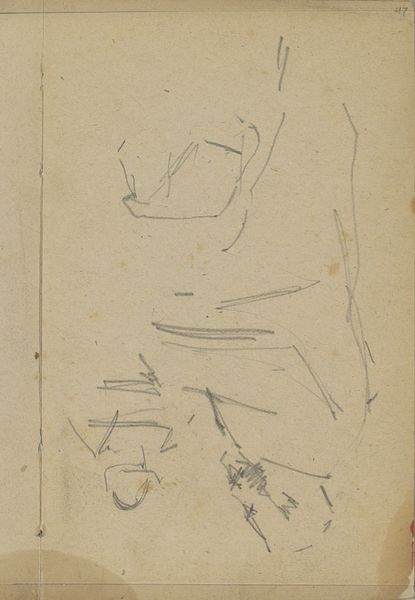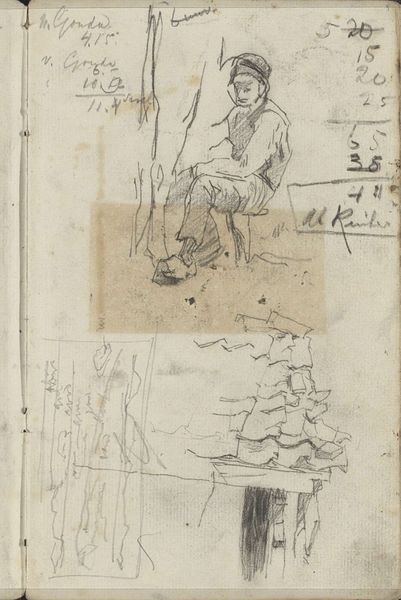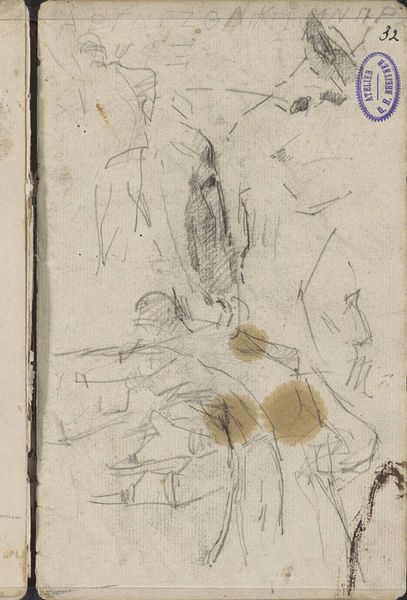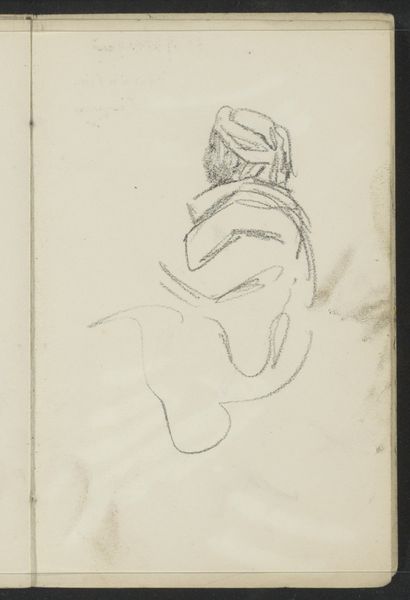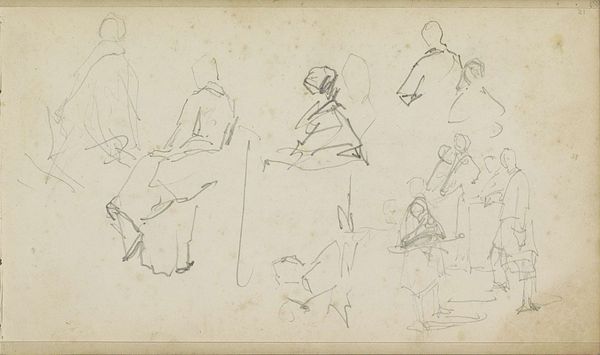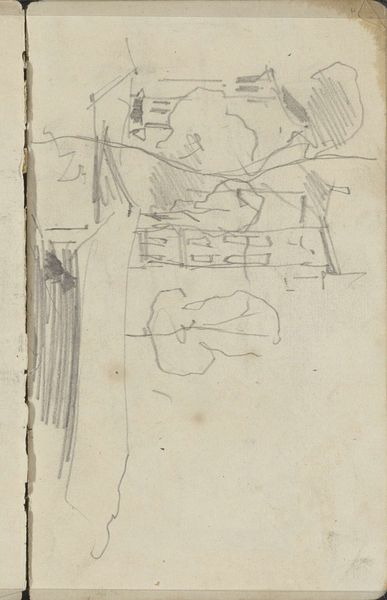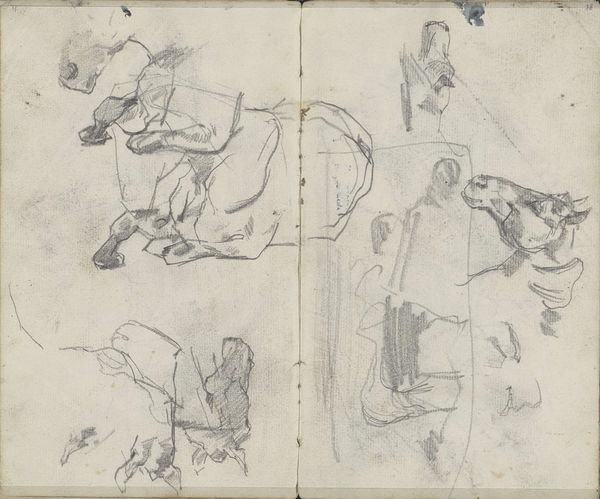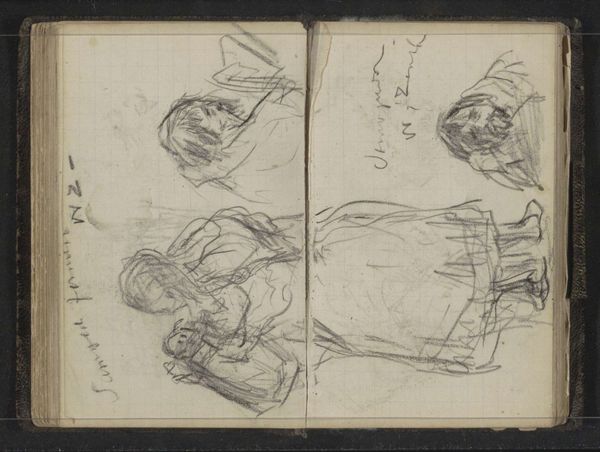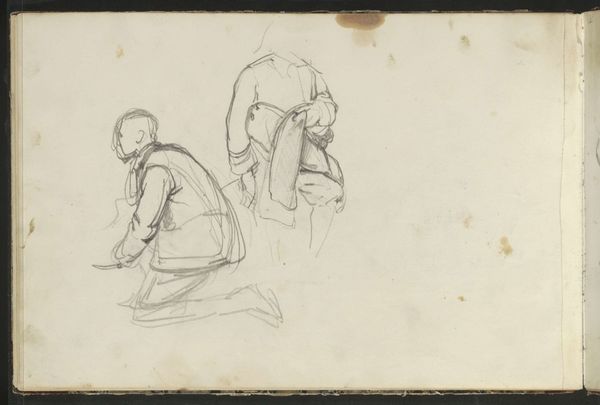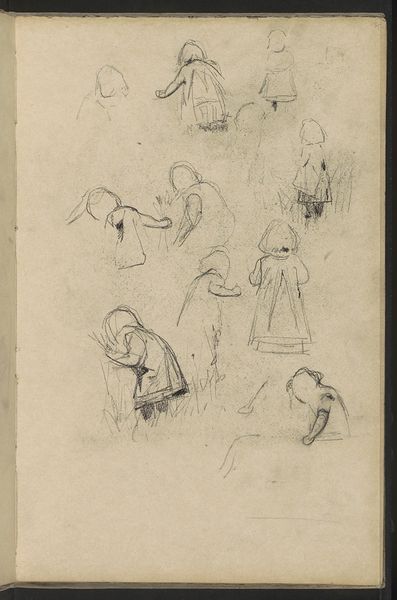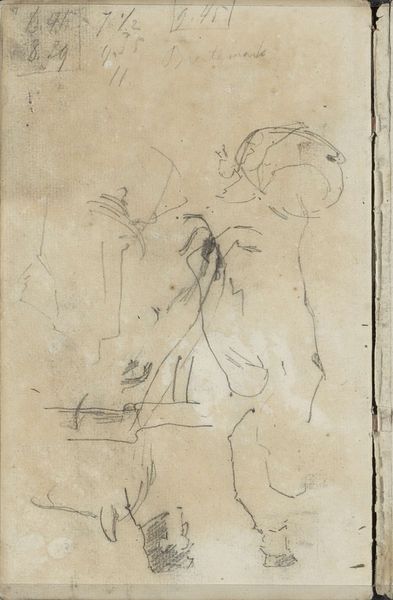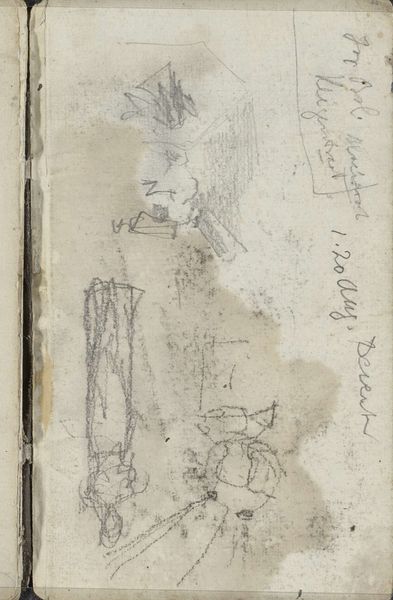
drawing, pencil
#
portrait
#
drawing
#
figuration
#
pencil
#
realism
Copyright: Rijks Museum: Open Domain
Curator: My initial impression is one of quiet observation. A hushed space, perhaps a courtyard or interior, with these figures existing in their own worlds. Editor: Indeed. What we have here is a pencil drawing by Isaac Israels, created sometime between 1887 and 1934. It's called "Drie zittende figuren in oosterse kledij," or "Three Seated Figures in Oriental Dress," now held at the Rijksmuseum. Curator: "Oriental dress"—that term carries a lot of baggage, doesn’t it? We have to acknowledge how loaded it is with colonial-era assumptions and exoticizing perspectives. What we perceive through those cultural lenses invariably shapes the imagery, even if unintentionally. Editor: Precisely. This sketch exists within that historical context, a product of its time. Israels was part of a generation of artists grappling with representing different cultures. It’s less about pure documentation and more about the artist's interpretation of the "Orient," feeding into Western fantasies and power dynamics. Notice how loosely defined the figures are, lacking distinct individual features beyond their attire. It speaks more about Western projections than accurately depicting Eastern identities. Curator: Absolutely. It’s interesting how the figures are presented. The seated pose has an interesting visual language as well: there’s passivity suggested by seatedness itself, perhaps aligning with then-current European biases toward the East, while other cultures valued posture, attitude, and gaze of a figure as active engagements. But here they’re presented…differently. I wonder about the message this conveys beyond surface observation. Editor: What strikes me about the piece, aside from its historical framing, is the immediacy of the drawing. The fleeting lines suggest a quick study, capturing a momentary glimpse. This also connects to art institutions framing practices of sketching or preparatory works differently across gender, class, race…Who got to capture which momentary glimpse, and whose gaze has been centered and privileged here, too. Curator: Yes, the sketch-like quality adds another layer of interest. It’s as if we're seeing Israels thinking on paper. A lot of the emotion emanates from seeing it that way, I think. I love the way you framed its cultural positioning too. Editor: And I appreciate you revealing the underlying symbolism—a key way for unlocking a richer appreciation! This sketch invites us to contemplate both the artist's perspective and the broader socio-political context that informed its creation, wouldn't you agree? Curator: A double-edged approach for an audio tour—I think we can trust it provides context, but not all answers. I'm confident our audience will appreciate this lens into Israels' process and period.
Comments
No comments
Be the first to comment and join the conversation on the ultimate creative platform.
